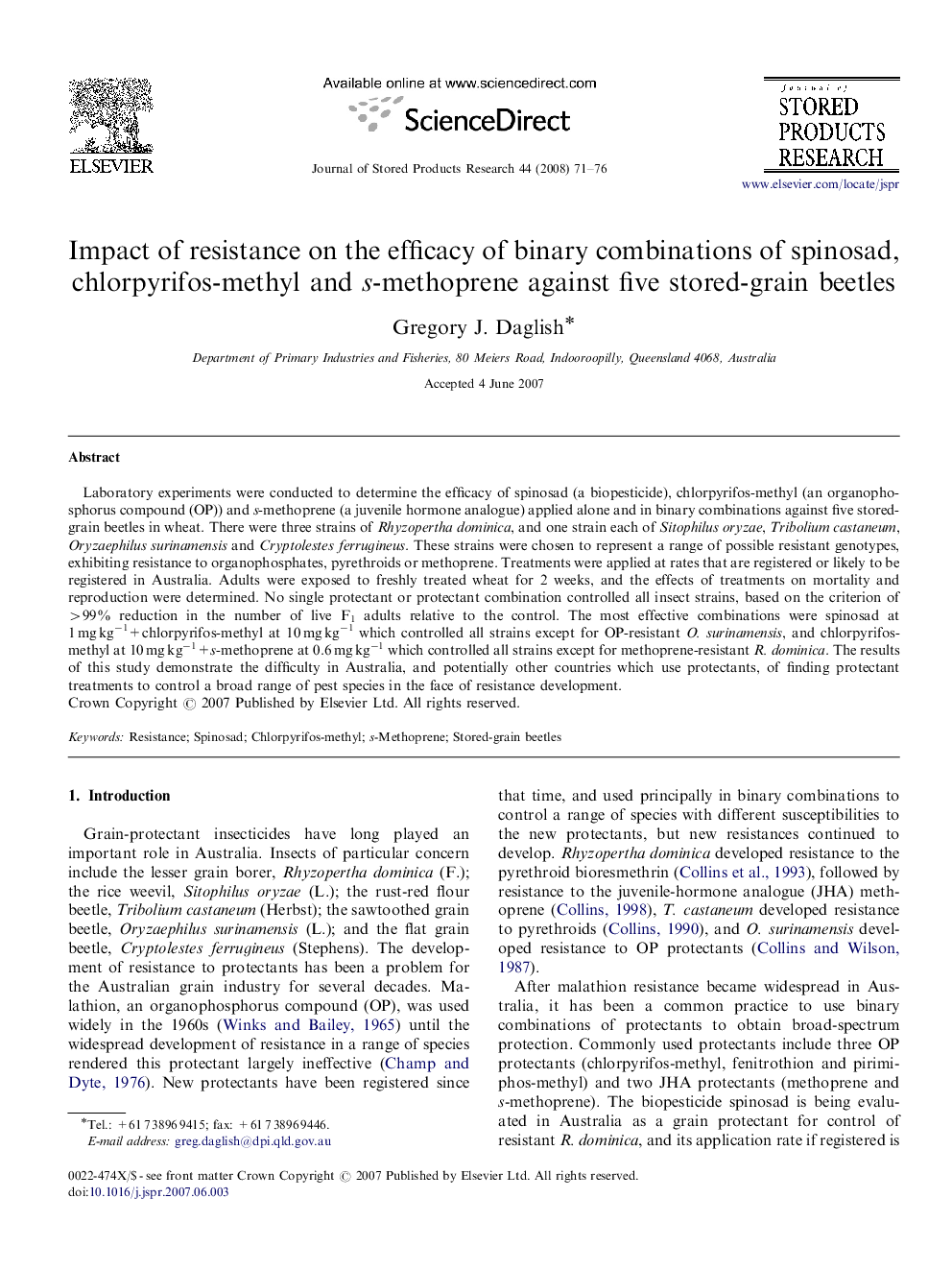| Article ID | Journal | Published Year | Pages | File Type |
|---|---|---|---|---|
| 4517522 | Journal of Stored Products Research | 2008 | 6 Pages |
Laboratory experiments were conducted to determine the efficacy of spinosad (a biopesticide), chlorpyrifos-methyl (an organophosphorus compound (OP)) and s-methoprene (a juvenile hormone analogue) applied alone and in binary combinations against five stored-grain beetles in wheat. There were three strains of Rhyzopertha dominica, and one strain each of Sitophilus oryzae, Tribolium castaneum, Oryzaephilus surinamensis and Cryptolestes ferrugineus. These strains were chosen to represent a range of possible resistant genotypes, exhibiting resistance to organophosphates, pyrethroids or methoprene. Treatments were applied at rates that are registered or likely to be registered in Australia. Adults were exposed to freshly treated wheat for 2 weeks, and the effects of treatments on mortality and reproduction were determined. No single protectant or protectant combination controlled all insect strains, based on the criterion of >99% reduction in the number of live F1 adults relative to the control. The most effective combinations were spinosad at 1 mg kg−1+chlorpyrifos-methyl at 10 mg kg−1 which controlled all strains except for OP-resistant O. surinamensis, and chlorpyrifos-methyl at 10 mg kg−1+s-methoprene at 0.6 mg kg−1 which controlled all strains except for methoprene-resistant R. dominica. The results of this study demonstrate the difficulty in Australia, and potentially other countries which use protectants, of finding protectant treatments to control a broad range of pest species in the face of resistance development.
